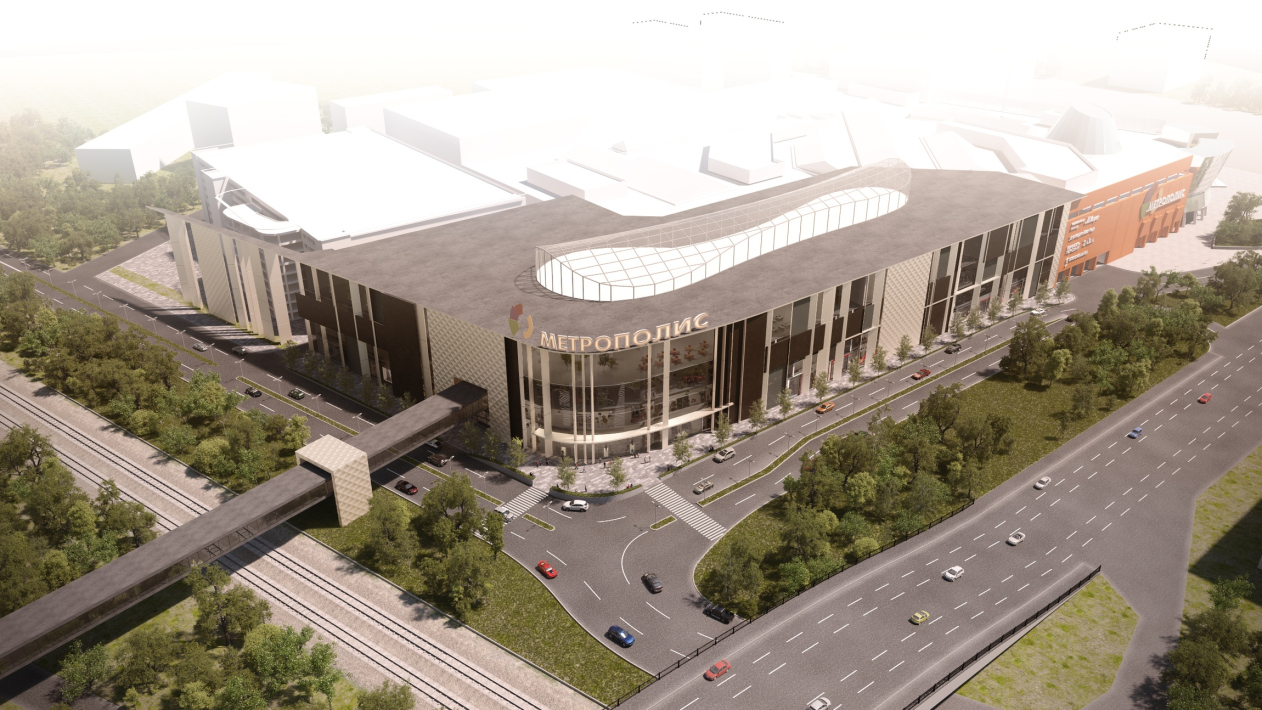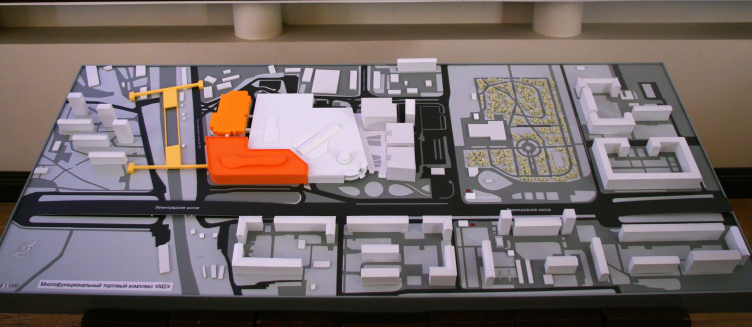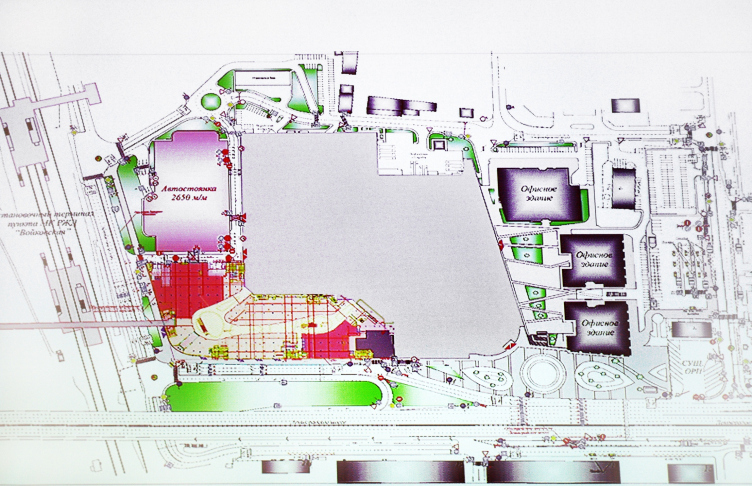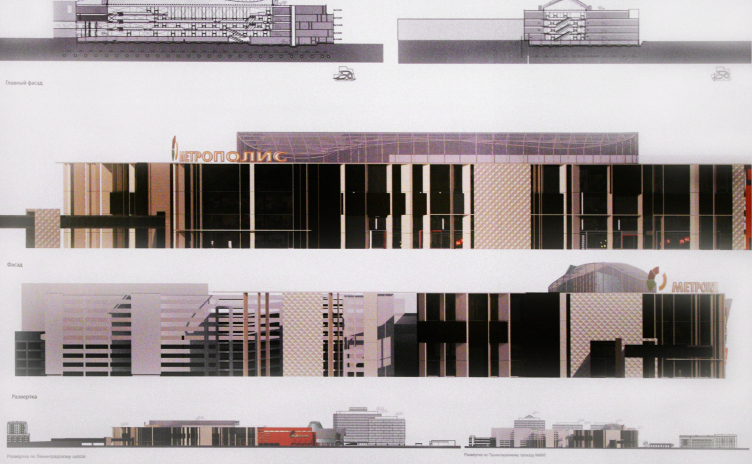Located near
"Voikovskaya" metro station, "Metropolis" is considered to
be
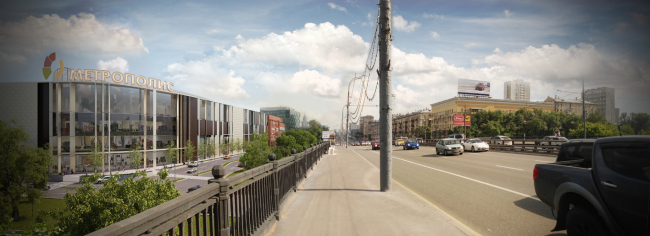
Multi-purpose complex on the Leningrad Highway
Initially, the new building was designed by the
British bureau DunnettCraven that treated this project as a "thing in
itself" of a self-sufficient shape and with bright but dull facades. True,
it looked great that way but it did not correlate either with its immediate
surroundings or with any of the surrounding highways, so the commissioner made
a decision to organize a dedicated closed tender for the design solutions of
the future complex. This contest was won by UNK project, and this year in July
it got the approval of Moscow Architectural Council.
As the chief architect and the co-founder of UNK
Project Julius Borisov shares, the idea of developing, in the facades of
"Metropolis-2", the design solution of the already-existing complex
was discarded by the authors of the project practically from the very start. One
of the main arguments against it was the length of the facade of the new
building - it is almost twice as long as the existing one's, and, had these two
planes visually merged into one, the Leningrad Avenue would have got a giant
"hedge" building.

Multi-purpose complex on the Leningrad Highway
Being a deliberate contrast to its immediate
neighbor, though, the building of the second stage is highly responsive to the
context of the
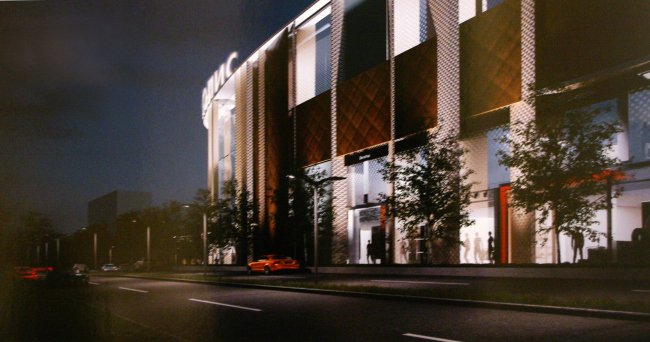
Multi-purpose complex on the Leningrad Highway
The harmony between the new complex and its surroundings is also achieved by its horizontal fracturing - the facades are made up of three wide belts that unobtrusively conceal the true number of its floors. Two of these belts are executed from glass. At the bottom level, this will help to maximally open up the building to the city (in the direct sense of this word in the summertime and only visually in winter), as well as to provide for the necessary advertising for the ground-floor businesses and thus spare the facades of the complex from huge billboards and LED screens. On the top floor, the panoramic glazing also comes in handy: it is the restaurant and the garden areas that are situated there. As for the central belt, it is executed from natural stone of a dark-brown color. In contrast with it, work the above-mentioned lamellae that the architects propose to paint a light-coffee hue. The interaction of these materials is not limited to their colors, though - UNK Project offsets the polished stone surface with a sophisticated structure of the metallic panels. The multi-angle ornament that forms its basis looks like textured skin that the handbags of many expensive brands are made of.
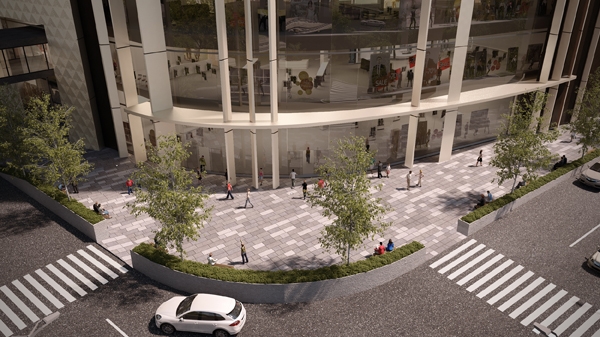
Multi-purpose complex on the Leningrad Highway
Exactly the same style - the dark-brown stone
and light-colored textured metallic panels - is applied to the covered
pedestrian overpass that will connect "Metropolis-2" and the new
station of Moscow Railroad that is being built nearby. This connection is of
great town-planning and social value - thanks to it, the passengers of
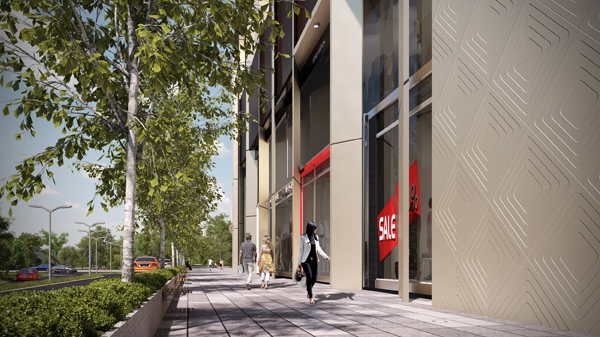
Multi-purpose complex on the Leningrad Highway
As for those people who are going to reach
"Metropolis-2" by car, the project provides for a reconstruction of
the multilevel parking garage situated directly behind the shopping center. What
is interesting is the fact that the architects not only build it up, thus
providing an extra thousand car stalls, but also cover it from the street side
with a special concealing colonnade, as if extending the facade of the shopping
mall and thus achieving the stylistic unity. And so as not to lead the visitors
of the mall into temptation of parking their cars directly in front of the
building on the doubler of the

